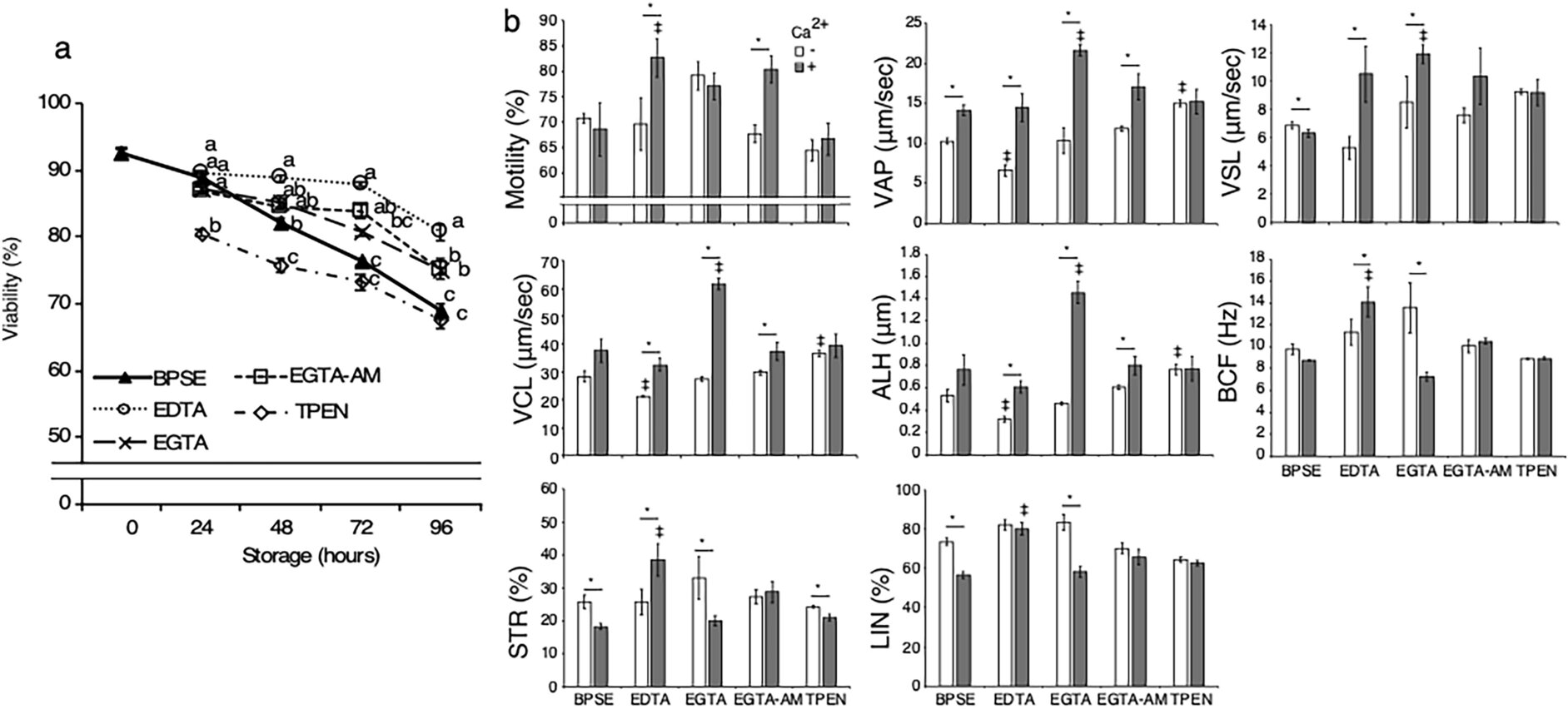

Researchers from the University of Tsukuba have developed an advanced refrigerated storage technology that prolongs the fertilization capacity of chicken sperm by arresting the energy metabolism dynamics, achieved through the depletion of calcium inside and outside the sperm cells. This innovation holds immense potential for enhancing poultry breeding efficiency, in addition to the preservation and expansion of unique genetic resources, thereby offering a promising avenue for maintaining biodiversity in poultry species.
In vitro sperm preservation is vital for bird species with large eggs that are unsuitable for cryopreservation. Refrigerated storage is a key method that is favored for its simplicity, affordability, and industrial feasibility. However, bird sperm, especially chicken sperm, are susceptible to damage from low temperatures.
In chickens, refrigerated storage notably impairs sperm cell membranes and mitochondria, drastically reducing fertilization capacity within 6–24 h. Despite this deterioration in fertilization ability within such a short period, chicken sperm exhibits remarkable durability, retaining viability and fertilization ability for up to three weeks after entering the female reproductive tract.
Researchers explored the regulatory mechanisms sustaining and disrupting the fertilization capacity of chicken sperm. They discovered that refrigerated storage-induced fertility impairment originates from an influx of calcium ions into sperm cells.
Experimentation with specific chelators to extract calcium ions from within and around the cells revealed a reversible deactivation of sperm fertilization functions. This was validated by in vivo fertility tests, demonstrating that sperm could be refrigerated for more than three days, exceeding previous storage durations.
The team delved deeper into this phenomenon, focusing on energy metabolism. They observed that removing intra- and extra-cellular calcium impacts the energy metabolism dynamics associated with chicken sperm, inducing a physiological dormancy-like state. This state features characteristics like cell hypoxia, lowered pH, and intermittent motility.
These results, now published in Scientific Reports, suggest that calcium acts as a molecular switch, regulating the dormancy and reactivation of fertilization functions in chicken sperm. This switch may be involved in the reproductive strategy of poultry sperm, which can survive several weeks in the female reproductive tract, synchronizing with ovulation to fertilize eggs.
This innovative, straightforward technique for long-term cold storage of sperm could significantly benefit the poultry breeding industry, offering cost-effective and efficient propagation methods for rare genetic resources.
More information:
Pangda Sopha Sushadi et al, Arresting calcium-regulated sperm metabolic dynamics enables prolonged fertility in poultry liquid semen storage, Scientific Reports (2023). DOI: 10.1038/s41598-023-48550-2
Provided by
University of Tsukuba
Citation:
New technology for long-term liquid storage of chicken semen by arresting energy metabolism (2023, December 22)
retrieved 23 December 2023
from https://phys.org/news/2023-12-technology-long-term-liquid-storage-chicken.html
This document is subject to copyright. Apart from any fair dealing for the purpose of private study or research, no
part may be reproduced without the written permission. The content is provided for information purposes only.





